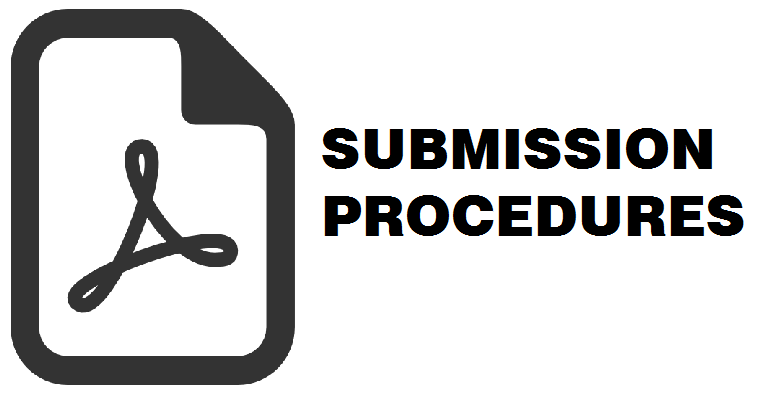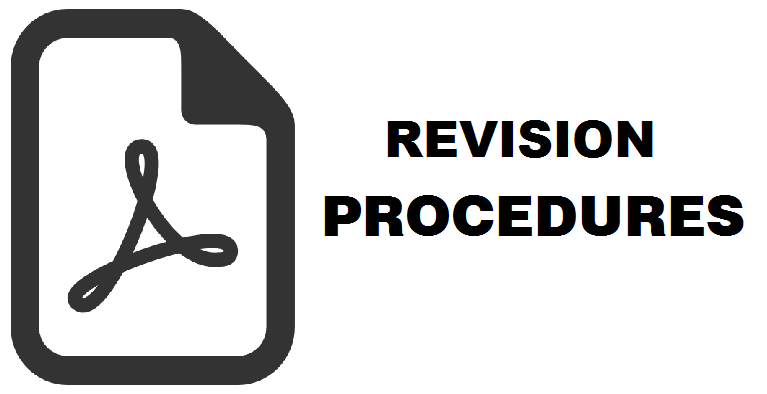Spectral Characteristics of Plastic Debris in the Beach: Case Study of Makassar Coastal Area
Ahmad Faizal(1*), Shinta Werorilangi(2), Wasir Samad(3)
(1) Department of Marine Sciences, Universitas Hasanuddin, Indonesia
(2) Department of Marine Sciences, Universitas Hasanuddin, Indonesia
(3) Department of Marine Sciences, Universitas Hasanuddin, Indonesia
(*) Corresponding Author
Abstract
Keywords
Full Text:
PDFReferences
Andrady, A. L. (2015). Persistence of plastic litter in the oceans. In M. In: Bergmann, Gutow, L., Klages, M (Ed.), Marine Anthropogenic Litter (pp. 57-22): Springer International Publishing AG Switzerland.
Aoyama, T. (2014). Monitoring of marine debris in the sea of Japan using multi-spectral sattelite images Paper presented at the SPIE Asia-Pacific Remote Sensing.
Diaz, R., & Rosenberg, R. (1995). Marine benthic hypoxia: A review of its ecological effects and the behavioural response of benthic macrofauna. Oceanography and Marine Biology-an Annual Review, 33(33), 245-133.
Driedger, H. Durr, K. Mitchel, J. Flannery, E. Brancazi, & Cappelen, P. V. (2013). Plastic Debris; Remote sensing and characterization. Canada: University of Waterloo.
Flanigan, D. F., Samuels, A. C., & Ben-David, A. (2004). Noise assessment of a Fourier transform infrared spectroradiometer subject to the stability of a conventional laboratory blackbody source. Applied Optics, 43(13), 2767-2776. doi:10.1364/AO.43.002767
GESAMP. (2015). Sources, fate and effects of microplastics in the marine environment: Part two of a global assessment (P. J. K. a. C. M. Rochman Ed.). 4 Albert Embankment, London SE1 7SR: INTERNATIONAL MARITIME ORRGANIZATION.
Gregory, M. R. (2009). Environmental implications of plastic debris in marine settings-entanglement, ingestion, smothering, hangers-on, hitch-hiking and alien invasions. Philosophical Transactions of the Royal Society B: Biological Sciences, 364(1526), 2013-2025. doi:doi:10.1098/rstb.2008.0265
Halma, C. (2008). USB4000 Fiber Optic Spectrometer: Instalation and Operation Manual. Retrieved from www.oceanoptics.com/technical/USB4000OperatingInstructions.pdf
Hochberg, E. J., Atkinson, M. J., & Andréfouët, S. (2003). Spectral reflectance of coral reef bottom-types worldwide and implications for coral reef remote sensing. Remote Sensing of Environment, 85(2), 159-173. doi:https://doi.org/10.1016/S0034-4257(02)00201-8
Hörig, B., Kühn, F., Oschütz, F., & Lehmann, F. (2001). HyMap hyperspectral remote sensing to detect hydrocarbons. International Journal of Remote Sensing, 22(8), 1413-1422. doi:10.1080/01431160120909
Huete, A. R. (1988). A soil-adjusted vegetation index (SAVI). Remote Sensing of Environment, 25(3), 295-309. doi:https://doi.org/10.1016/0034-4257(88)90106-X
Imhof, H. K., Sigl, R., Brauer, E., Feyl, S., Giesemann, P., Klink, S., Leupolz, K., Löder, M. G. J., Löschel, L. A., Missun, J., Muszynski, S., Ramsperger, A. F. R. M., Schrank, I., Speck, S., Steibl, S., Trotter, B., Winter, I., & Laforsch, C. (2017). Spatial and temporal variation of macro-, meso- and microplastic abundance on a remote coral island of the Maldives, Indian Ocean. Marine Pollution Bulletin, 116(1), 340-347. doi:https://doi.org/10.1016/j.marpolbul.2017.01.010
Jambeck, J. R., Geyer, R., Wilcox, C., Siegler, T. R., Perryman, M., Andrady, A., Narayan, R., & Law, K. L. (2015). Plastic waste inputs from land into the ocean. Science, 347(6223), 768-771. doi:10.1126/science.1260352
Jensen, J. R. (2004). Introductory Digital Image Processing: A Remote Sensing Perspective.: Prentice-Hall, Inc, New York.
Krelling, A. P., Williams, A. T., & Turra, A. (2017). Differences in perception and reaction of tourist groups to beach marine debris that can influence a loss of tourism revenue in coastal areas. Marine Policy, 85, 87-99. doi:https://doi.org/10.1016/j.marpol.2017.08.021
Lillesand, T., Kiefer, R. W., & Chipman, J. (2015). Remote Sensing and Image Interpretation, 7th Edition: Wiley.
Lippiatt, S., Opfer, S., & Arthur, C. (2013). Marine Debris Monitoring and Assessment: NOAA Technical Memorandum NOS-OR&R-46.
Mace, T. H. (2012). At-sea detection of marine debris: Overview of technologies, processes, issues, and options. Marine Pollution Bulletin, 65(1), 23-27. doi:https://doi.org/10.1016/j.marpolbul.2011.08.042
Maulana, F. (2016). Identifikasi sampah laut di kawasan wisata pantai Kota Makassar. (Skripsi), Universitas Hasanuddin, Makassar.
McIlgorm, A., Campbell, H. F., & Rule, M. J. (2011). The economic cost and control of marine debris damage in the Asia-Pacific region. Ocean & Coastal Management, 54(9), 643-651. doi:https://doi.org/10.1016/j.ocecoaman.2011.05.007
Moy, K., Neilson, B., Chung, A., Meadows, A., Castrence, M., Ambagis, S., & Davidson, K. (2018). Mapping coastal marine debris using aerial imagery and spatial analysis. Marine Pollution Bulletin, 132, 52-59. doi:https://doi.org/10.1016/j.marpolbul.2017.11.045
Murphy, L. G., Peters, S., van Sebille, E., James, N. A., & Gibb, S. (2018). Concept for a hyperspectral remote sensing algorithm for floating marine macro plastics. Marine Pollution Bulletin, 126, 255-262. doi:https://doi.org/10.1016/j.marpolbul.2017.11.011
NOAA. (2015). Turning The Tide On Trash. A Learning Guide On Marine Debris: NOAA PIFSC CRED.
Nolet, C., Poortinga, A., Roosjen, P., Bartholomeus, H., & Ruessink, G. (2014). Measuring and Modeling the Effect of Surface Moisture on the Spectral Reflectance of Coastal Beach Sand. PLOS ONE, 9(11), e112151. doi:10.1371/journal.pone.0112151
Pawar, P., Shirgaonkar, S., & affiliations, R. (2016). Plastic marine debris: Sources, distribution and impacts on coastal and ocean biodiversity. PENCIL Publication of Biological Sciences (OCEANOGRAPHY). 3(1): 40-54. (ISSN: 2408-5561). 3, 40-54.
Pichel, W. G., Churnside, J. H., Veenstra, T. S., Foley, D. G., Friedman, K. S., Brainard, R. E., Nicoll, J. B., Zheng, Q., & Clemente-Colón, P. (2007). Marine debris collects within the North Pacific Subtropical Convergence Zone. Marine Pollution Bulletin, 54(8), 1207-1211. doi:https://doi.org/10.1016/j.marpolbul.2007.04.010
SCBD-STAP-GEF. (2012). Impacts of Marine Debris on Biodiversity: Current Status and Potential Solutions. Montreal: Technical Series.
Schaepman, M. E., & Dangel, S. (2000). Solid laboratory calibration of a nonimaging spectroradiometer. Applied Optics, 39(21), 3754-3764. doi:10.1364/AO.39.003754
Shah, A. A., Hasan, F., Hameed, A., & Ahmed, S. (2008). Biological degradation of plastics: A comprehensive review. Biotechnology Advances, 26(3), 246-265. doi:https://doi.org/10.1016/j.biotechadv.2007.12.005
Thevenon, F., Carroll, C., & Sousa, J. (2014). Plastic Debris in the Ocean. The Characterization of Marine Plastics and their Environmental Impacts. Situation Analysis Report. Gland, Switzerland: IUCN
Van Cauwenberghe, L., Claessens, M., Vandegehuchte, M. B., Mees, J., & Janssen, C. R. (2013). Assessment of marine debris on the Belgian Continental Shelf. Marine Pollution Bulletin, 73(1), 161-169. doi:https://doi.org/10.1016/j.marpolbul.2013.05.026
van Franeker, J. A., & Law, K. L. (2015). Seabirds, gyres and global trends in plastic pollution. Environmental Pollution, 203, 89-96. doi:https://doi.org/10.1016/j.envpol.2015.02.034
Veenstra, T. S., & Churnside, J. H. (2012). Airborne sensors for detecting large marine debris at sea. Marine Pollution Bulletin, 65(1), 63-68. doi:https://doi.org/10.1016/j.marpolbul.2010.11.018
Webb, H. K., Arnott, J., Crawford, R. J., & Ivanova, E. P. (2013). Plastic Degradation and Its Environmental Implications with Special Reference to Poly(ethylene terephthalate). Polymers, 5(1), 1-18.
Article Metrics
Refbacks
- There are currently no refbacks.
Copyright (c) 2020 Indonesian Journal of Geography

This work is licensed under a Creative Commons Attribution-NonCommercial 4.0 International License.
Accredited Journal, Based on Decree of the Minister of Research, Technology and Higher Education, Republic of Indonesia Number 225/E/KPT/2022, Vol 54 No 1 the Year 2022 - Vol 58 No 2 the Year 2026 (accreditation certificate download)
ISSN 2354-9114 (online), ISSN 0024-9521 (print)










